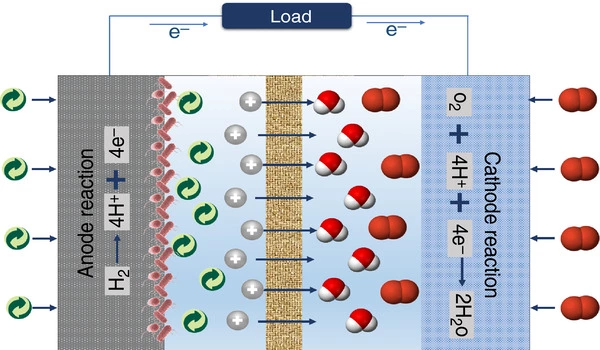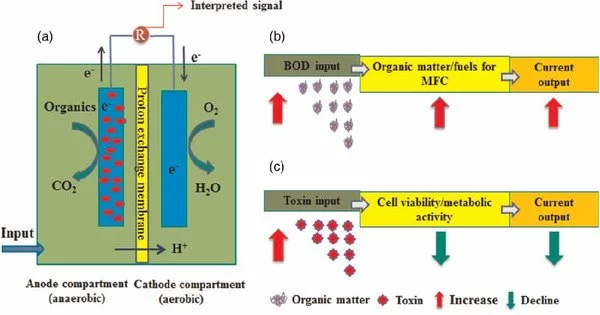A self-powered microbial fuel cell (MFC) biosensor is a device that generates electrical power from the metabolic activity of microorganisms while also monitoring organic freshwater contamination. This novel approach combines energy generation and environmental monitoring, resulting in a long-term and cost-effective solution for assessing water quality.
The release of biodegradable waste from plant and animal sources into freshwater habitats is a major environmental hazard. Nonetheless, due to their complexity and high prices, present methods for monitoring water quality appear to be more or less unworkable. A team of researchers has successfully built a self-sustaining and buoyant biosensor utilizing low-cost carbon-based materials for monitoring water quality at freshwater lakes and river inlets.
The discharge of organic effluents (biodegradable waste materials from plants and animals) into freshwater bodies is a major environmental hazard that threatens the health and sustainability of these aquatic ecosystems. However, the current methods for assessing water quality are difficult and expensive.
In this context, researchers from Japan’s Ritsumeikan University recently created a self-powered, low-cost floating biosensor for monitoring water quality at freshwater lakes and river intakes. On September 9, 2023, this paper was made available online, and on November 1, 2023, it was published in Volume 200 of the Biochemical Engineering Journal.
We created a self-powered, stand-alone floating biosensor based on a microbial fuel cell (MFC) for early organic wastewater detection. The MFC case was created using a 3D printer, and the electrodes were created using low-cost carbon-based materials.
Professor Kozo Taguchi
“We created a self-powered, stand-alone floating biosensor based on a microbial fuel cell (MFC) for early organic wastewater detection. The MFC case was created using a 3D printer, and the electrodes were created using low-cost carbon-based materials,” says study leader Professor Kozo Taguchi of Ritsumeikan University’s College of Science and Engineering, Department of Electrical and Electronic Engineering.
MFCs create electricity with the help of electrogenic microorganisms. These bacteria generate an electric current as a result of their biological metabolism. The amount of electricity created by the MFC is proportional to the concentration of organic waste eaten by the electrogenic bacteria. This distinguishing trait is thus employed to design organic waste biosensors driven by MFCs.

The Japanese research team created a self-powered biosensor based on a floating MFC (FMFC) using affordable carbon-based materials to continuously detect the degree of organic contamination in lakes and rivers. To that purpose, the researchers filled the FMFC’s anode (the electrode where oxidation occurs and electrons are released) with soil containing electrogenic bacteria. Following that, the anodic bacteria destroyed the organic materials in the water and transformed the stored chemical energy into electricity. The electrical output was then utilized to calculate the amount of organic waste in the contaminated water.
Despite the fact that the researchers did not characterize the bacterial communities present in the soil sample, they reasoned that microorganisms from the genera Geobacter, Shewanella, and Pseudomonas contributed to the electrical activity. Prior studies indicate that paddy soils naturally contain electrogenic bacteria belonging to these genera.
The floatable biosensor assembly was then outfitted with a light-emitting diode (LED). The LED was able to detect the quantity of organic contamination in the water samples under investigation by harnessing the electricity produced by the electrogenic bacteria. It began flashing when the chemical oxygen demand (COD), a metric used to quantify the level of organic pollutants in water, exceeded the 60 mg/L threshold. Furthermore, when the COD substantially surpassed the threshold number, the LED flashed faster.
Prof. Taguchi continues, “Because the FMFC biosensor generates its own electricity, it does not require an external power supply.” Furthermore, it can be employed in early detection systems that monitor organic wastewater influxes in freshwater bodies.”





